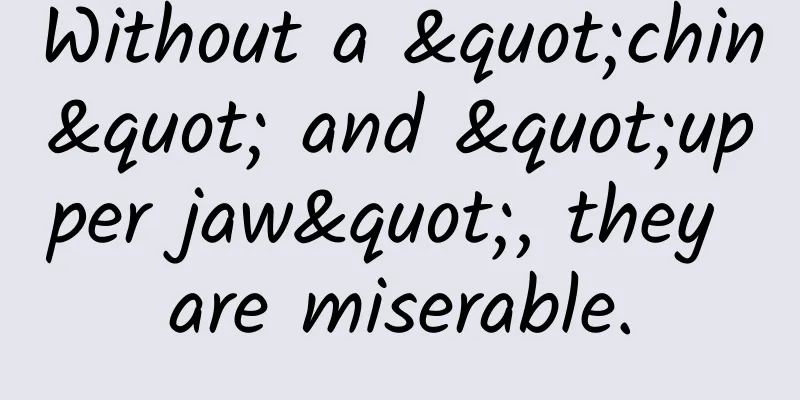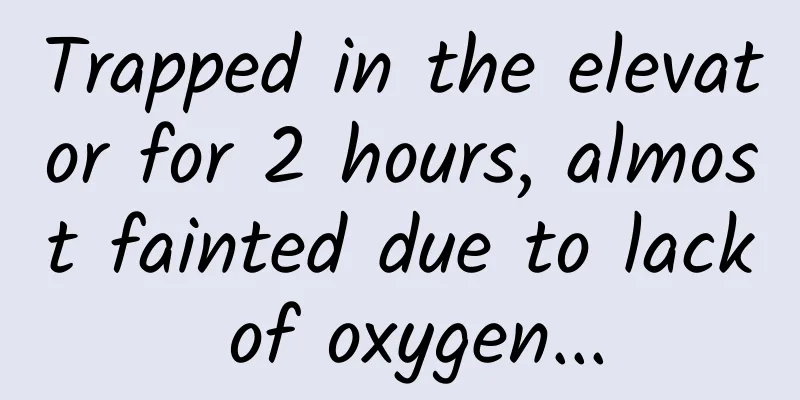Yutu visits the "Dragon's Back" "Yutu-2 Driving Diary"

|
Although the back of the moon is vast, there are always some fascinating treasures that attract the pilots to explore and pursue month after month. A few months ago, Yutu-2 discovered a saber-shaped stone, like a fin on the back of a dragon. Scientists and pilots expressed great interest in such a strange landform. They gave it a nickname: "Dragon Spine" and decided to find out what it was. ▲"Dragon's Back" during the 40th day of the month. After months of rapid strides and climbing mountains, and enduring several "insomnia" crises, the pilots became more and more excited as they saw the destination getting closer and closer. Before the 40th day of hibernation, Yutu-2 finally saw the "Dragon's Back" across the pit. A full record of visiting the Dragon's Back While Yutu was sleeping, the drivers began to plan for the next step. However, the results of the terrain analysis poured cold water on everyone. Many impact craters surrounded the "Dragon's Back", forming a natural protection circle. If you want to get close, you must cross this winding and bumpy road, climb over the steep slopes of the mountains, and cross the "line of sky" between the two impact craters. The technical difficulty is directly full marks! ▲Driving route map for the morning of the 41st month. At 9:28 am on March 26, 2022, Yutu-2 woke up and immediately set out on its journey. With three consecutive steps, it moved 25 meters in a nearly right-angled line during the morning of the lunar day and arrived at the north direction of the "Dragon's Back". The straight-line distance is 11 meters, which is basically within reach. ▲View of the "Dragon's Back" in the morning of the 41st month. While the moon was resting at noon, the pilots analyzed and deduced the last step. The contour map was almost filled with the impassable red impact crater area, leaving only a "single-plank bridge". This only way not only required climbing a slope of more than 9 degrees to enter the inner edge of the east impact crater, but also to find an area with a gentle slope on the inner wall of the crater as a "detection platform" to get close to the "Dragon's Back" for detection. Behind each constraint condition are multiple risk points, and the failure to meet any factor may bring endless troubles to subsequent detection. Fortunately, there happened to be such a gentle slope in the east crater, but the pilots were still worried: Can they control the 9° slope accurately? Will there be a side landslide when entering such a large crater? The cautious pilots knew that one step away from the far side of the moon could be a disaster at any time. In addition, the calculation results of the dormant points are not optimistic. There is no resting place on the exploration road to "Dragon's Spine". The nearest dormant area is to the northwest of the current position, which is completely opposite to the exploration direction. This means that the exploration must be completed and returned on the first day. The original one-step movement time must be taken in two steps, and a perfect exploration must be completed. This requires an extreme round-trip exploration plan and the perfect cooperation of all the skilled lunar driving team members. All the difficulties and challenges are like mountains in front of the drivers, but no matter how difficult it is, they will not back down. They not only have confidence in Yutu, but also in the experience and complete solutions summarized by everyone's careful driving over a long period of time. They face the challenges head-on and start! The drivers first designed and verified the detection route and detection steps again based on conditions such as lighting, measurement and control, and body shadow. They also worked with the scientific research team of the colleges and universities to calculate and review the driving route based on indicators such as slip rate and trafficability. They also conducted intensive training and scenario deduction for the drivers who performed this operation, and designed an efficient return movement mode, with the time consumption of each step accurate to the minute level and the error accurate to the centimeter level. Everything was ready, and the drivers drove Yutu on this crisis-ridden "outing" trip during the Qingming Festival. The drivers first controlled Yutu-2 to make an "S" shape to cleverly avoid rocks on the way, climbed over a 9° slope, and moved 9.8 meters to the starting point of the detection. The control was still precise, and the worrying errors did not occur. The exploration journey got off to a good start. ▲“S” move approaching the “Dragon’s Spine”. Afterwards, everyone adjusted the course and headed towards the "Dragon's Back". The target gradually became clearer. Closer! Closer! The drivers carefully drove forward nearly one meter and began the first infrared detection. After the results came out, some shadows appeared in the infrared field of view. The scientists expressed some regret and hoped to get closer to fully glimpse the mystery of the "Dragon's Back". ▲The image of obstacle avoidance at the end of the first step of blind walking. It was already late at night, and facing the approaching rear limit of the measurement and control arc, the pressure on the drivers increased sharply, but the temptation of the "Dragon's Back" still made everyone want to complete the detection perfectly. After the drivers controlled Yutu to move forward 5 centimeters again, they conducted a second infrared detection. The results showed that the bright part of the detection target appeared perfectly in the infrared field of view! ▲Two infrared detections of "Dragon's Back". The pilots had no time to be happy, as they still had to face a thrilling retreat. Only after they had safely retreated to the vicinity of the lunar noon, could this return exploration be considered a success. They first controlled Yutu to retreat in a straight line to the vicinity of the exploration starting point, and the images from the obstacle avoidance camera recorded the traces of this exploration in detail. ▲Successful retreat. After the evacuation, Yutu looked back at the "Dragon Ridge" and the wheel tracks again. It happened to be the Qingming Festival, and Yutu was facing the huge rock of the "Dragon Ridge" that had stretched across the back of the moon for millions of years. It seemed as if it was also offering sacrifices and praying, which was quite interesting. ▲Look at the "Dragon's Back" from afar and pray for blessings. Carefully designed for hibernation After saying goodbye to the "Dragon's Back", it is time to go into hibernation. Due to factors such as the Yutu body and the mobile suspension, there is a certain error between the calculated hibernation point attitude and the actual one. The drivers carefully selected a larger hibernation area, but no one can guarantee that it can be completely covered. This time the hibernation point attitude is almost within the indicator boundary, and the drivers also hope that the good luck of detection can continue into hibernation. The first movement to find the dormant point was completed quickly. After reaching the position, the wheels did not return to zero. The telemetry showed that the three-axis attitude had a rolling angle that exceeded the lower limit of 0.04°. The drivers judged based on the telemetry in the middle of the turn that the rolling angle could be reduced after turning right, so they organized a right turn of 2 degrees. The telemetry showed that there was only a difference of 0.001° at this time. The drivers prayed that this return to zero could turn the tide, but the angle increased again after the wheel returned, exceeding 0.06°, and dormancy was not possible here. What should we do? Move forward or backward to try our luck? Or should we organize to move to a large sleeping spot in the distance? You know, the last time the sleeping posture did not match, the drivers worked all night to find a sleeping spot. Is it going to happen again? At this time, the experienced driver analyzed and found that there happened to be several sparse dormancy areas within one meter to the northwest of Yutu, so he could give it a try. However, he also had to face the problem of error between the calculated angle and the actual angle. What if it still didn't work after he got there? A series of assumptions were raised and rejected by the pilots. The answers to many questions were almost the opposite. What should we do? The opposite... Suddenly, an idea flashed in my mind: Can we do the opposite operation? If we move in the opposite direction of the dormant heading, wouldn't our pitch angle and roll angle have the same value but opposite sign? But there is another problem. The angle between this area and the current position is not the supplementary angle of the dormant posture! Iron Man said that if there are conditions, we must go, and if there are no conditions, we must create conditions to go! We can create a supplementary angle! The drivers pulled a route from the destination in the opposite direction of the dormant heading, and then took an intersection near the current dormant area as the middle turning position, and set a parking point on the straight line to the target point. Yutu only needs to go to the upper left position first, and then go in the opposite direction of the dormant heading to reach the target point. As long as one of the three points, the turning point, the middle point of the straight line and the end point of the target, meets the dormant posture requirements, Yutu can sleep on the spot! ▲Panoramic image of the 41st lunar daytime hibernation site. After the design was completed, the drivers controlled Yutu to drive forward in the predetermined direction again. The turning point soon arrived. The drivers held their breath and kept their eyes on the monitoring data on the big screen. It did not meet the requirements... Then they went to the second point. This point did not seem to be in the dormant area, but when the car stopped, the telemetry showed that it should meet the dormant requirements. The drivers then controlled Yutu to turn to the dormant heading, and the attitude fell steadily within the dormant range! The drivers' tense nerves can finally relax. Facts have proved that only with careful and exquisite design can we travel steadily on the back of the moon! (Our Space) |
>>: Is it reliable to use parasites to treat tumors?
Recommend
Was the third flight of SpaceX Starship a success or a failure?
At 8:25 a.m. Central Time on the 14th (21:25 Beij...
Why was the paper of this Zhejiang female scientist cited by an academician of the French Academy of Sciences? New targets and new strategies will illuminate the future of childhood tumors
Reporter Weng Danni Photographer Jin Jingxin Publ...
Plague and the Evolution of Diet: The Three Years of the Black Death in Europe
Written by | Wei Shuihua Header Image | foodiesfe...
Yotta《Learning AE from Scratch》
Course Catalog ├──Learn AE from Scratch (Part 1)|...
Apple iPhone 11 is going to be renamed, which may indicate that the mobile phone market is declining
There have been rumors for a long time that the n...
How effective is Momo advertising? Explanation of Momo advertising!
In the past two years, mobile Internet has been e...
What is the difference between ibuprofen of different prices?
There are more than one type of ibuprofen on the ...
The logic and thinking behind Maimai’s “naked knowledge donation” marketing
The day before yesterday morning, a girl from Mai...
Can't eat sow meat? Will eating sow meat make you "sow crazy"? You are not the last person to know
Popularize science and spread science to the publ...
Can moles also turn into cancer? Young people with moles should be careful, as these 3 places are the most dangerous
"The mole on your palm, I always remember wh...
When Musk took the initiative to talk to Samsung and Hyundai, we knew that Tesla was beginning to worry about the future
When the market is dominated by one superpower an...
CPC model optimization guide, for reference in delivery!
Search ads have low display and poor clickthrough...
How can real estate and home furnishing companies attract customers to their stores?
This issue will combine the novel marketing model...
The latest notice on migrant workers returning home in Shanghai in 2022: Do returnees have to pay for quarantine at their own expense? Attached is a summary of the latest policies in various regions
Recently, I saw short videos online about people ...
Why is immunity the "weapon" to defeat the virus? 4 simple and effective ways to enhance immunity
Speaking of immunity Everyone knows If your immun...









